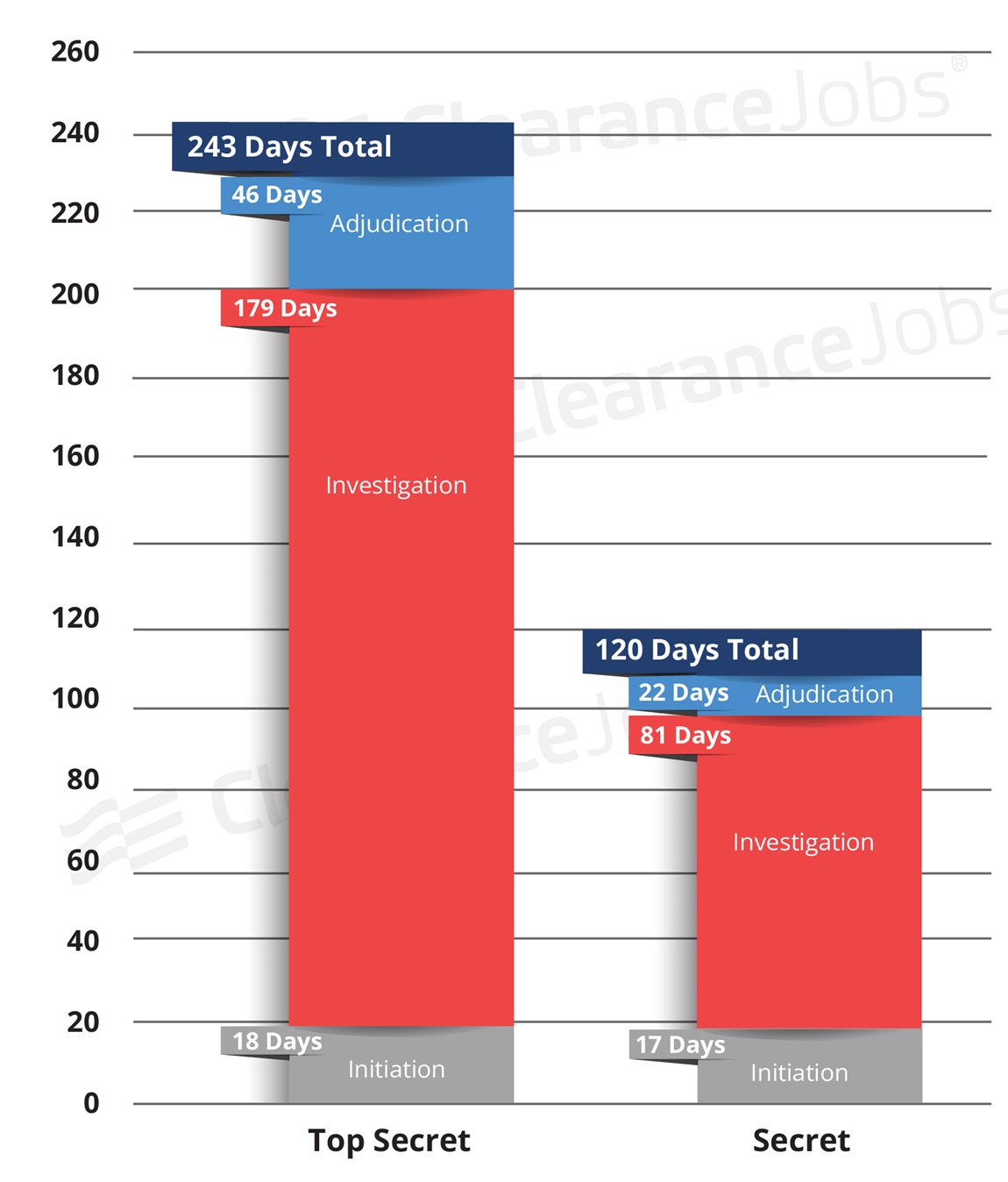If you’re a DoD/Industry applicant who has recently applied for a security clearance or a security officer who has submitted a packet, you may have noted the trendline of increasing security clearance processing times. Multiple outages and systems issues over the past several months are causing an uptick in overall clearance processing times.
DoD/Industry Security Clearance Processing Times

Recently released figures for the National Industrial Security Program Policy Advisory Council (NISPPAC) noted caseloads have grown by approximately 13,000 over the past year, and previous reports have noted an increase in more complex cases driving up overall processing times. Adjudication timeline increases were a big part of the increase in Top Secret processing timelines. That increase was attributed to a DISS technical issue affecting some adjudications. Cases unimpacted by the technical issue continued to average 20 days during the FY 2024 second quarter, Defense Counterintelligence and Security Agency (DCSA) data notes.
With security clearance processing times increasing for even the currently reported fastest 90% of applicants, the government is emphasizing one continuing bright spot in timeliness within the DoD population – interim or preliminary clearances. Interim or preliminary clearance determinations are continuing to average a week, which enables many cleared professionals to get to work faster. Unfortunately, for other cleared candidates, particularly those at the TS/SCI-level, without a fully adjudicated clearance there are limits on how that individual can be onboarded into SAP or other programs that may be a part of the job.
The current delays and technical issues are something the government is aware of, and is looking to address. As new energy enters into the National Background Investigation Services (NBIS) recovery effort, security clearance processing times should continue to decrease and regulate, particularly if eApp works more consistently and issues with initiations decrease.
Acquisition Reform in the Clearance Process
Slower clearance processing times also create a sort of clearance purgatory, where candidates are compelled to wait in their current employment rather than moving into a different position. Because many contracts required a fully adjudicated – not interim – clearance, true clearance mobility is only attainable within the fully adjudicated cleared population. As processing times for Top Secret clearances, in particular, veer closer to the one-year mark, that lack of mobility becomes significant. With 243 days the average for the fastest 90% of applicants, that means there are outlying applicants waiting upwards of a year or more for a final determination. Until acquisition reform addresses the issues of how contracts are written and cleared contractors are able to more easily put interim cleared candidates or those with pending eligibility into contract roles, the focus will stay on faster, more efficient initial processing and full adjudication.




